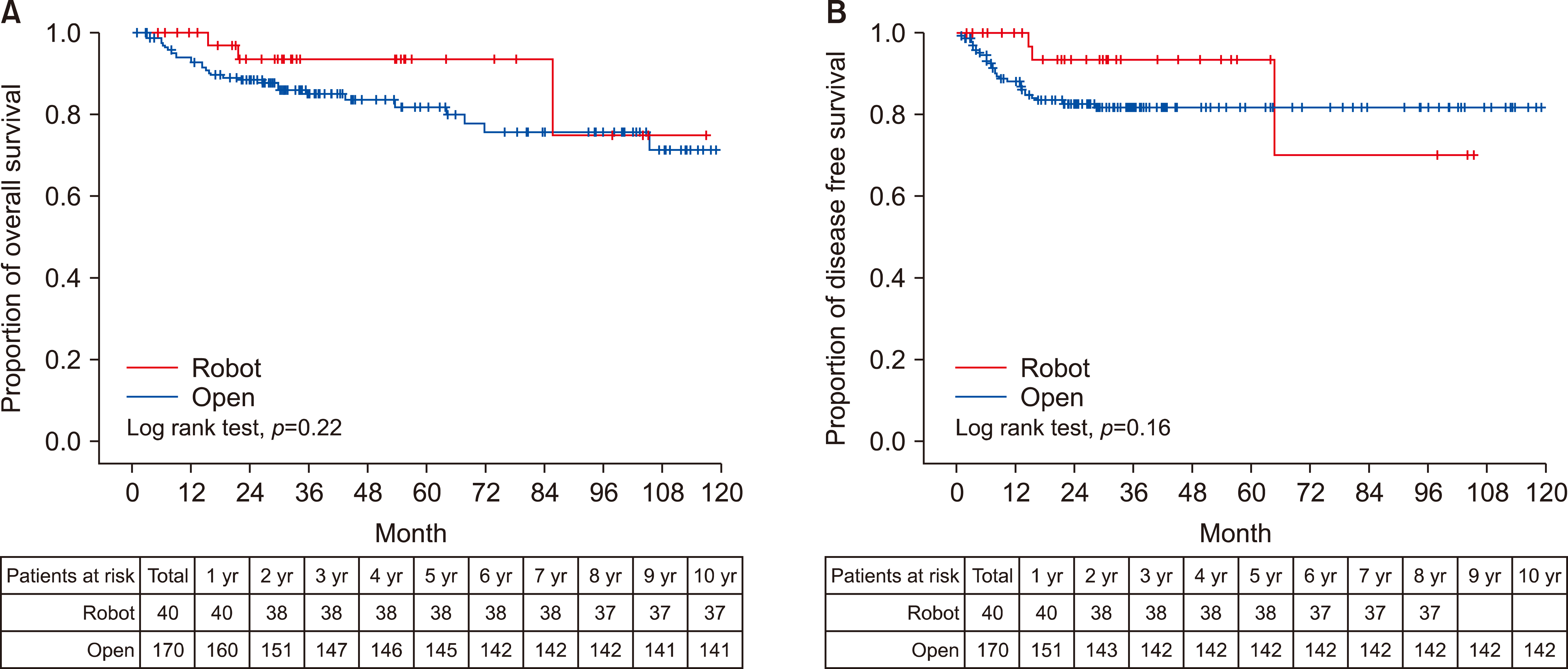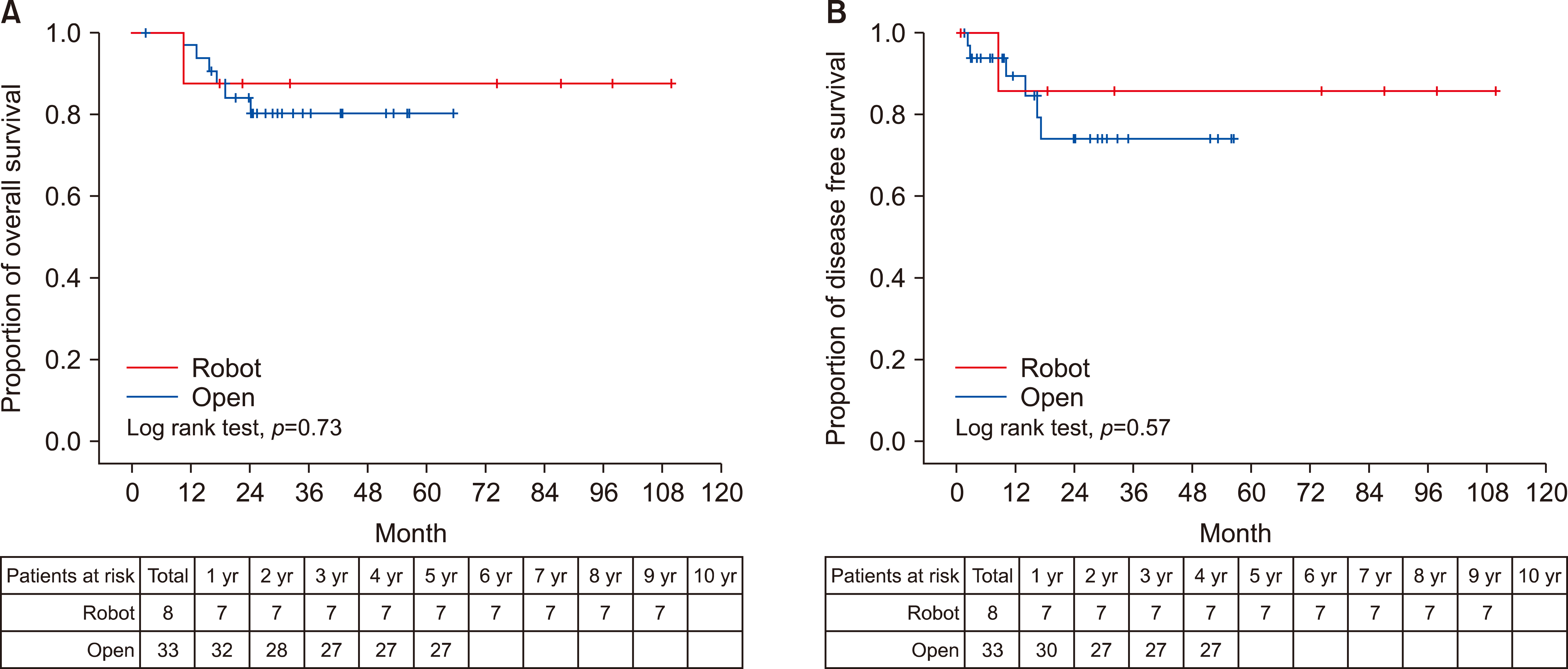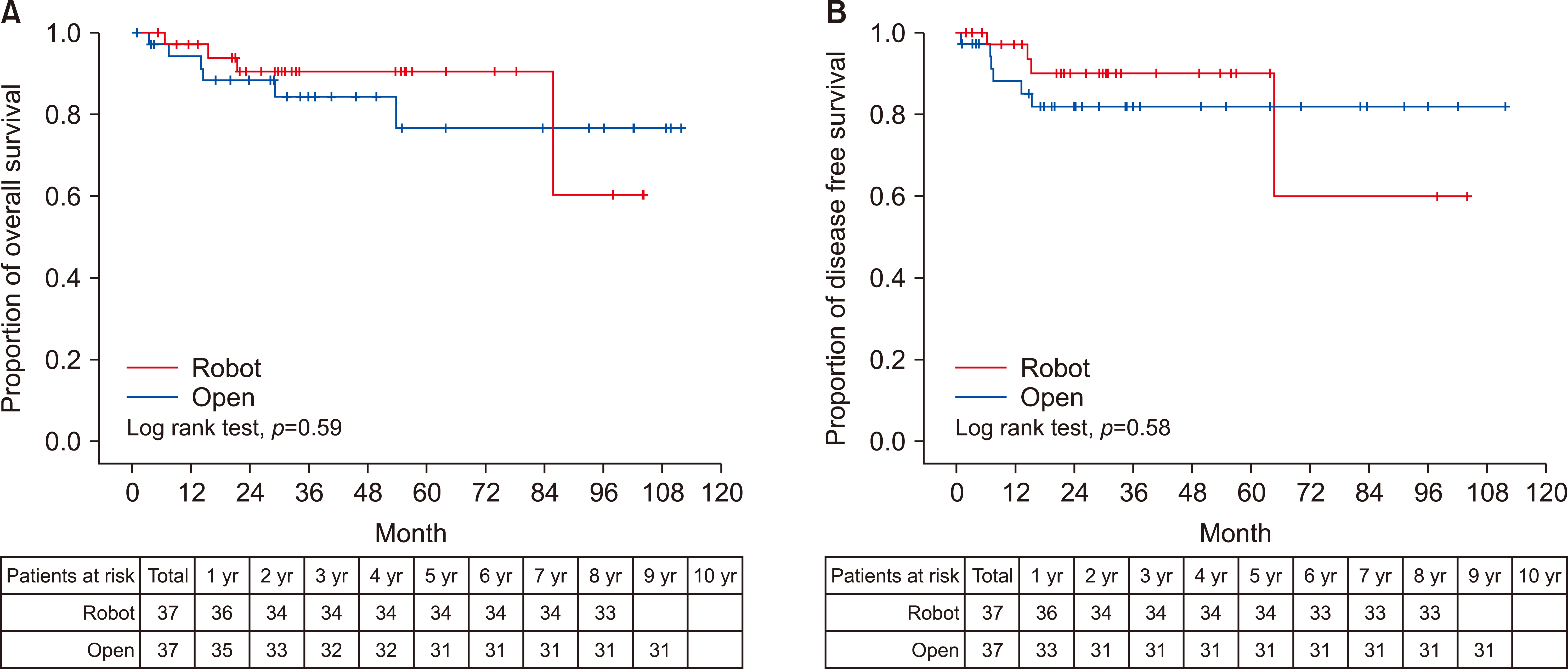2. Antoniou SA, Andreou A, Antoniou GA, Koch OO, Köhler G, Luketina RR, et al. 2015; Volume and methodological quality of randomized controlled trials in laparoscopic surgery: assessment over a 10-year period. Am J Surg. 210:922–929. DOI:
10.1016/j.amjsurg.2015.04.022. PMID:
26257155.


3. Mirnezami R, Mirnezami AH, Chandrakumaran K, Abu Hilal M, Pearce NW, Primrose JN, et al. 2011; Short- and long-term outcomes after laparoscopic and open hepatic resection: systematic review and meta-analysis. HPB (Oxford). 13:295–308. DOI:
10.1111/j.1477-2574.2011.00295.x. PMID:
21492329. PMCID:
PMC3093641.



4. Wakabayashi G, Cherqui D, Geller DA, Buell JF, Kaneko H, Han HS, et al. 2015; Recommendations for laparoscopic liver resection: a report from the second international consensus conference held in Morioka. Ann Surg. 261:619–629. DOI:
10.1097/SLA.0000000000001184. PMID:
25742461.

5. Casciola L, Patriti A, Ceccarelli G, Bartoli A, Ceribelli C, Spaziani A. 2011; Robot-assisted parenchymal-sparing liver surgery including lesions located in the posterosuperior segments. Surg Endosc. 25:3815–3824. DOI:
10.1007/s00464-011-1796-9. PMID:
21656067.


6. Choi GH, Choi SH, Kim SH, Hwang HK, Kang CM, Choi JS, et al. 2012; Robotic liver resection: technique and results of 30 consecutive procedures. Surg Endosc. 26:2247–2258. DOI:
10.1007/s00464-012-2168-9. PMID:
22311301.

7. Giulianotti PC, Coratti A, Sbrana F, Addeo P, Bianco FM, Buchs NC, et al. 2011; Robotic liver surgery: results for 70 resections. Surgery. 149:29–39. DOI:
10.1016/j.surg.2010.04.002. PMID:
20570305.

8. Tsung A, Geller DA, Sukato DC, Sabbaghian S, Tohme S, Steel J, et al. 2014; Robotic versus laparoscopic hepatectomy: a matched comparison. Ann Surg. 259:549–555. DOI:
10.1097/SLA.0000000000000250. PMID:
24045442.

9. Spampinato MG, Coratti A, Bianco L, Caniglia F, Laurenzi A, Puleo F, et al. 2014; Perioperative outcomes of laparoscopic and robot-assisted major hepatectomies: an Italian multi-institutional comparative study. Surg Endosc. 28:2973–2979. DOI:
10.1007/s00464-014-3560-4. PMID:
24853851.


10. Chen PD, Hu RH, Liang JT, Huang CS, Wu YM. 2019; Toward a fully robotic surgery: performing robotic major liver resection with no table-side surgeon. Int J Med Robot. 15:e1985. DOI:
10.1002/rcs.1985. PMID:
30659758.

11. Yoon YS, Han HS, Cho JY, Ahn KS. 2010; Total laparoscopic liver resection for hepatocellular carcinoma located in all segments of the liver. Surg Endosc. 24:1630–1637. DOI:
10.1007/s00464-009-0823-6. PMID:
20035349.


12. Hwang DW, Han HS, Yoon YS, Cho JY, Kwon Y, Kim JH, et al. 2013; Laparoscopic major liver resection in Korea: a multicenter study. J Hepatobiliary Pancreat Sci. 20:125–130. DOI:
10.1007/s00534-012-0555-1. PMID:
23001191.

13. Navarro JG, Yang SJ, Kang I, Choi GH, Han DH, Kim KS, et al. 2020; What are the most important predictive factors for clinically relevant posthepatectomy liver failure after right hepatectomy for hepatocellular carcinoma? Ann Surg Treat Res. 98:62–71. DOI:
10.4174/astr.2020.98.2.62. PMID:
32051814. PMCID:
PMC7002877.



14. Dindo D, Demartines N, Clavien PA. 2004; Classification of surgical complications: a new proposal with evaluation in a cohort of 6336 patients and results of a survey. Ann Surg. 240:205–213. DOI:
10.1097/01.sla.0000133083.54934.ae. PMID:
15273542. PMCID:
PMC1360123.


15. Choi GH, Chong JU, Han DH, Choi JS, Lee WJ. 2017; Robotic hepatectomy: the Korean experience and perspective. Hepatobiliary Surg Nutr. 6:230–238. DOI:
10.21037/hbsn.2017.01.14. PMID:
28848745. PMCID:
PMC5554764.



16. Navarro J, Rho SY, Kang I, Choi GH, Min BS. 2019; Robotic simultaneous resection for colorectal liver metastasis: feasibility for all types of liver resection. Langenbecks Arch Surg. 404:895–908. DOI:
10.1007/s00423-019-01833-7. PMID:
31797029.


17. Chiow AKH, Rho SY, Wee IJY, Lee LS, Choi GH. 2020; Robotic ICG guided anatomical liver resection in a multi-centre cohort: an evolution from "positive staining" into "negative staining" method. HPB (Oxford). doi: 10.1016/j.hpb.2020.08.005. [in press]. DOI:
10.1016/j.hpb.2020.08.005.

18. Wang ZY, Chen QL, Sun LL, He SP, Luo XF, Huang LS, et al. 2019; Laparoscopic versus open major liver resection for hepatocellular carcinoma: systematic review and meta-analysis of comparative cohort studies. BMC Cancer. 19:1047. DOI:
10.1186/s12885-019-6240-x. PMID:
31694596. PMCID:
PMC6833163.



19. Guro H, Cho JY, Han HS, Yoon YS, Choi Y, Kim S, et al. 2018; Outcomes of major laparoscopic liver resection for hepatocellular carcinoma. Surg Oncol. 27:31–35. DOI:
10.1016/j.suronc.2017.11.006. PMID:
29549901.


20. Stiles ZE, Behrman SW, Glazer ES, Deneve JL, Dong L, Wan JY, et al. 2017; Predictors and implications of unplanned conversion during minimally invasive hepatectomy: an analysis of the ACS-NSQIP database. HPB (Oxford). 19:957–965. DOI:
10.1016/j.hpb.2017.06.012. PMID:
28760630.


21. Chong CCN, Lok HT, Fung AKY, Fong AKW, Cheung YS, Wong J, et al. 2020; Robotic versus laparoscopic hepatectomy: application of the difficulty scoring system. Surg Endosc. 34:2000–2006. DOI:
10.1007/s00464-019-06976-8. PMID:
31312961.


22. Laurence JM, Lam VW, Langcake ME, Hollands MJ, Crawford MD, Pleass HC. 2007; Laparoscopic hepatectomy, a systematic review. ANZ J Surg. 77:948–953. DOI:
10.1111/j.1445-2197.2007.04288.x. PMID:
17931255.


23. Sotiropoulos GC, Prodromidou A, Kostakis ID, Machairas N. 2017; Meta-analysis of laparoscopic vs open liver resection for hepatocellular carcinoma. Updates Surg. 69:291–311. DOI:
10.1007/s13304-017-0421-4. PMID:
28220382.


24. Wabitsch S, Kästner A, Haber PK, Benzing C, Krenzien F, Andreou A, et al. 2019; Laparoscopic versus open liver resection for benign tumors and lesions: a case matched study with propensity score matching. J Laparoendosc Adv Surg Tech A. 29:1518–1525. DOI:
10.1089/lap.2019.0427. PMID:
31670608.


25. Zheng H, Huang SG, Qin SM, Xiang F. 2019; Comparison of laparoscopic versus open liver resection for lesions located in posterosuperior segments: a meta-analysis of short-term and oncological outcomes. Surg Endosc. 33:3910–3918. DOI:
10.1007/s00464-019-07071-8. PMID:
31451921.


26. Han DH, Choi SH, Park EJ, Kang DR, Choi GH, Choi JS. 2016; Surgical outcomes after laparoscopic or robotic liver resection in hepatocellular carcinoma: a propensity-score matched analysis with conventional open liver resection. Int J Med Robot. 12:735–742. DOI:
10.1002/rcs.1714. PMID:
26537176.


27. Magistri P, Tarantino G, Assirati G, Olivieri T, Catellani B, Guerrini GP, et al. 2019; Robotic liver resection for hepatocellular carcinoma: a systematic review. Int J Med Robot. 15:e2004. DOI:
10.1002/rcs.2004. PMID:
31039281.

28. Wang WH, Kuo KK, Wang SN, Lee KT. 2018; Oncological and surgical result of hepatoma after robot surgery. Surg Endosc. 32:3918–3924. DOI:
10.1007/s00464-018-6131-2. PMID:
29488090.


29. Boggi U, Caniglia F, Amorese G. 2014; Laparoscopic robot-assisted major hepatectomy. J Hepatobiliary Pancreat Sci. 21:3–10. DOI:
10.1002/jhbp.34. PMID:
24115394.


30. Lai EC, Tang CN. 2016; Long-term survival analysis of robotic versus conventional laparoscopic hepatectomy for hepatocellular carcinoma: a comparative study. Surg Laparosc Endosc Percutan Tech. 26:162–166. DOI:
10.1097/SLE.0000000000000254. PMID:
27031650.

31. Chen PD, Wu CY, Hu RH, Chou WH, Lai HS, Liang JT, et al. 2017; Robotic versus open hepatectomy for hepatocellular carcinoma: a matched comparison. Ann Surg Oncol. 24:1021–1028. DOI:
10.1245/s10434-016-5638-9. PMID:
27778128.










 PDF
PDF Citation
Citation Print
Print



 XML Download
XML Download